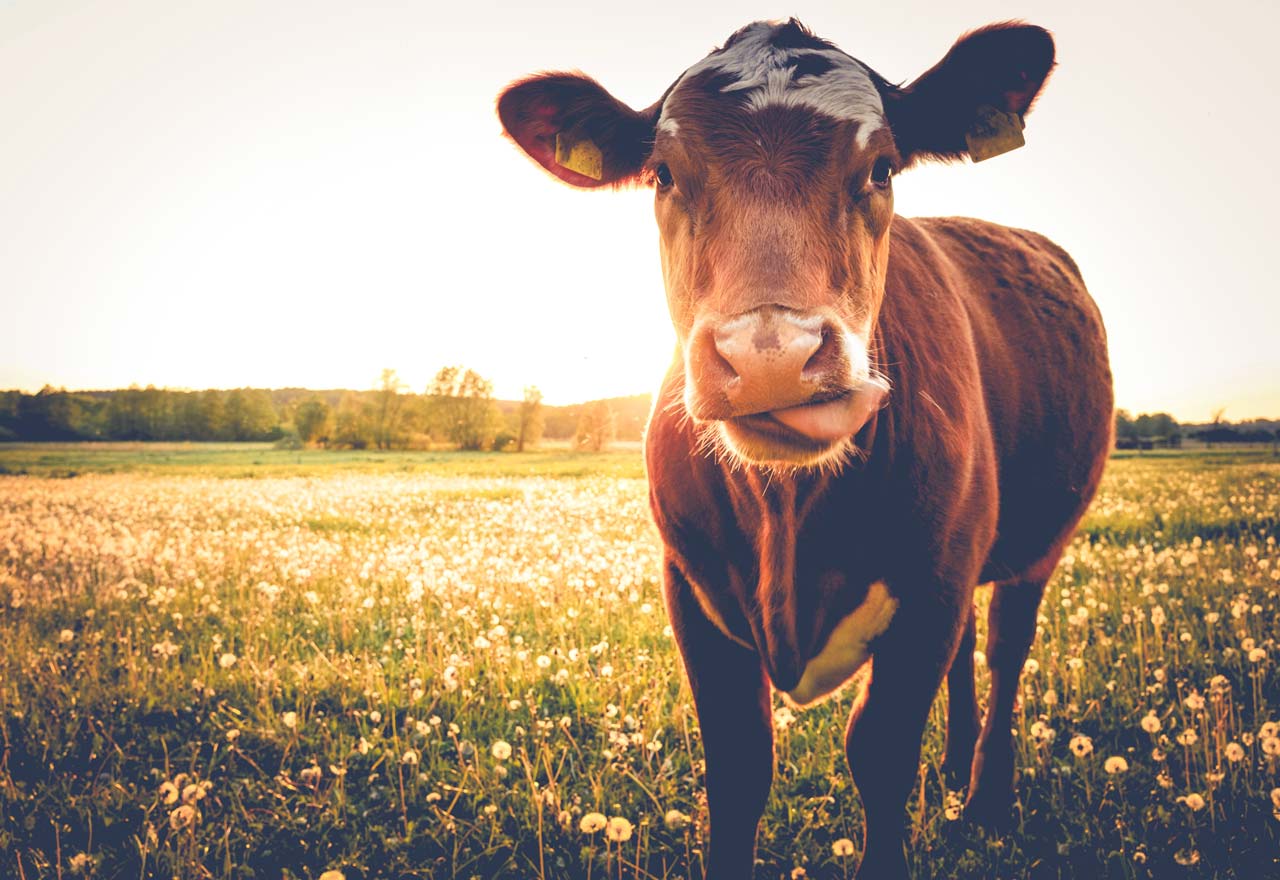Buying the Best Burger Requires Scrutiny
[This article was previously published in the spring issue of the Cultivator, Cornucopia’s quarterly newsletter.]
by Kestrel Burcham, JD, Director of Domestic Policy at The Cornucopia Institute
If a trip to the store to buy beef leaves you bewildered, you are not alone. Understanding the nuanced differences among the various products available in the marketplace requires a fair amount of homework and a healthy dose of scrutiny.
Unclear and sometimes downright misleading marketing tactics by industrial producers confuse consumers and shortchange farmers who sustainably produce the most nutritious beef using superior animal welfare practices.
Labels belie the complete story of beef production. Different farm management practices have varying impacts on the planet and human health. Here’s a breakdown of categories and labels to help you shop smarter.
Conventional Beef: Intensive, factory-scale production contributes significantly to greenhouse gas emissions, soil and water pollution, and land use concerns associated with growing cattle feed. Conventional cattle feed is grown in monoculture, with heavy use of synthetic fertilizers, pesticides, and tilling practices. On crowded and dirty feedlots, cattle are not able to engage in natural behaviors, such as grazing and socializing. Deforestation of vital rainforest ecosystems has also been directly linked to beef production.
Grass-Fed Beef: This label has surged in market popularity in recent years, partly due to consumer education about the harms of conventional beef production. But the label warrants a closer look. In January 2016, the USDA withdrew its previous “grass-fed” and “forage-fed” marketing-claim standards for ruminant livestock and their meat products. This means that the meat being labeled as grass-fed may not meet consumer expectations. In reality, this label only means that the cow has eaten grass at some point during its life cycle (most cattle are grass-fed when young and finished on concentrated feed).
100% Grass–Fed Beef: Although “100% grass-fed” beef production practices may have health benefits and can often be gentler on the planet, consumers should be aware that the label is not without potential complications and pitfalls. For example, some beef is raised on public lands (particularly prevalent in the western United States), causing serious degradation to sensitive wilderness, impacting wildlife, polluting waterways, and destroying important cultural sites.
Imported Beef: Grass-fed, organic beef imported from overseas directly competes with domestic organic and 100% grass-fed beef. But management style for imported meat is often unclear, leading to unfair competition with domestic, ethical beef producers. Due to current regulatory policy, meat from an animal that was raised and slaughtered in another country may be labeled “Product of U.S.” if it was processed here. That’s an unsettling problem for domestic organic beef producers who find their products consistently undercut in price.
Organic Beef: The certified organic beef label is the most regulated in the meat case. Unlike “grass-fed” or “natural” beef, organic beef comes with specific, legally defined guarantees. Federal law prohibits the use of growth hormones, antibiotics, and other synthetic chemicals in organic cattle production. Organic cattle must be raised on land and feed that are certified organic, without the environmental burden of synthetic fertilizers and pesticides. In contrast to conventional systems, organic beef producers must pasture their animals for at least 120 days during the season. So, all authentic organic beef is grass-fed, but not necessarily 100% grass-fed.
Regenerative Organic Practices: Management styles vary on certified organic beef farms. Some organic producers go beyond the minimum organic standards in their care for cattle and the environment. Regenerative organic management practices, such as intensive rotational grazing on biodiverse pastures, employ livestock to facilitate and foster soil health, while sequestering atmospheric carbon. In this respect, careful management of pastures and animals can help foster—rather than harm—climate and ecosystem health. Certified organic beef produced in regenerative organic systems is a value-added product and may be 100% grass-fed. Trustworthy labeling of this product remains to be seen, and, for now, consumers are left to discern for themselves which management practices beef producers employ.
Cornucopia’s forthcoming report will cover the complex landscape of organic beef production, including regulations, the marketplace, environmental issues, and the benefits of beef raised in organic, regenerative systems. In conjunction, Cornucopia will release the Organic Beef Scorecard, a mobile-friendly tool rating every domestic organic beef brand available at retail.
This research will empower consumers and wholesale buyers to invest their food dollars in the most ethical and sustainable organic beef production available.


